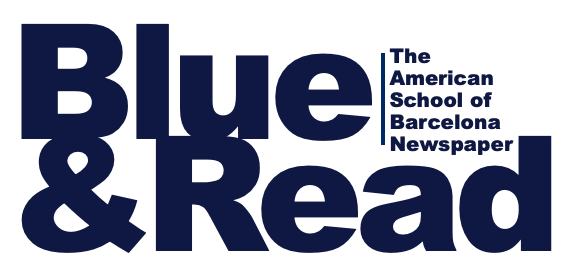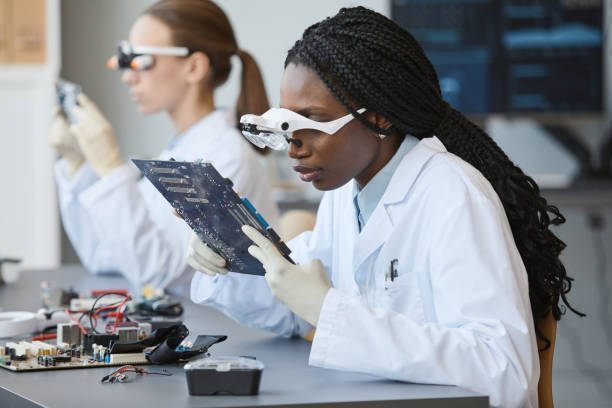Throughout history, women have been key players in advancements in STEM. Acknowledging all the vital contributions women in STEM have made is crucial, as it not only honors their achievements, but also inspires the upcoming generations to seek a career in these fields. Let’s take a look at some of these women and the ways in which they revolutionized their fields.
Historical Figures:
Florence Nightingale, who was known as “the Lady with the Lamp,” made remarkable advancements in STEM. Not only was she responsible for nursing during the Crimean War (1853 to 1856), but her work led to numerous improvements in education and hygiene. Additionally, her use of statistics tremendously improved healthcare. Collecting mortality rates, she created innovative graphs like the polar-area diagram to illustrate the effects of poor sanitation. In 1860, she opened the first professional training school for nurses, known as Nightingale Training School at St Thomas’ Hospital (5).
Marie Curie is perhaps one of the most well-known women in STEM. She worked as a physicist and chemist during a time when it was not common for women to work in these fields due to discrimination, stereotypes, and limited education opportunities. While radiation had already been discovered by the time Curie began her research, she was the first person to discover that radiation emits directly from atoms, and is not contingent on how they are arranged within molecules. With the help of her husband, she is most famous for discovering the elements polonium and radium. In 1903, she won the Nobel Prize in physics, and in 1911, she won the Nobel Prize in chemistry. During World War I, Marie Curie managed the Red Cross Radiology Service. In total, she provided x-rays for about 1 million soldiers. After the war, she traveled to the US to raise funds for radium research and ultimately opened the Radium Institute in Poland in 1932 (6).
Other remarkable women in STEM include the ENIAC Programmers, six young women who programmed the first all-electronic computer during WWII. Without instructions, manuals, or programming languages, these women were employed to manually calculate hundreds of equations and learn the inner workings of the computer. Despite their awe-inspiring contributions, Kay McNulty, Betty Jennings, Betty Snyder, Marlyn Meltzer, Fran Bilas, and Ruth Lichterman were not recognized for their work until much later (3).
Ruth Rogan Benerito and another chemist worked together for several years on a material that is central to the human wardrobe: cotton. They focused on chemically modifying cotton’s structure so that it could compete with synthetic fibers. Similarly, they developed a new process for treating cotton fibers, called cross-linking. This is when the weak hydrogen bonds between polymer chains are replaced by stronger types of bonds, making it so that clothing made from the fabric came out of the washing machine and dryer wrinkle-free. Benerito’s contribution revolutionized the cotton industry post WWII (10).
Rosalind Franklin worked in STEM during the 1950s, but unfortunately wasn’t awarded a Nobel Prize as it isn’t awarded posthumously. She studied coal and discovered molecular pores which allowed for “the classification of coals and for a better understanding of their performance as an energy source.” (2) Along with her research group, she was the first to discover the entire structure of a virus called TMV, which was the first virus structure to be discovered. Not only did her team publish articles about this discovery, but they also constructed a model of TMV for exhibition in 1958 (8). Franklin is most famous for her X-ray diffraction image in 1952, known as Photo 51, which eventually proved the double helix structure of DNA (5).
“Photo 51,” demonstrating the double helix in our DNA
Another woman in STEM was Katherine Johnson. Being both African-American and female, she was confronted with unfair prejudice in her field, making it extremely difficult for her to succeed. Despite this, Johnson became a member of NASA’s Space Task Group. In 1960, she co-wrote a paper with another engineer about calculations for launching a rocket into orbit. This paper and her work with NASA have helped put astronauts into space, as well as the first humans on the moon. An example of this is with the mission Apollo 11, where she calculated the trajectory for the 1969 Apollo 11 flight to the moon (5).
Lastly, Sally Ride was one of the many women who broke gender barriers in STEM. In 1983, she became the first American woman to fly into space. She funded Sally Ride Science in 2001 to inspire the younger generation, specifically young women, to pursue careers in Science, Math, Engineering, and Technology (9).
Modern Innovators
Nguyen Thi Kim Chi is a Vietnamese scientist who had support from the British Council to complete her master’s degree in Earth Futures, which specializes in environments, communities, and relationships. Her career in STEM was inspired by addressing environmental challenges, as well as empowering women in her community. Currently, she is encouraging women to pursue higher education and careers in STEM (7).
Another example of a modern innovator is Dr. Irene Samy Fahim. She is an Assistant Professor at the department of Industrial and Service Engineering and Management at Egypt Nile University and the American University in Cairo. Recently, she won a L’Oréal-UNESCO For Women in Science 2021 award for her creation of non-plastic single-use tableware using sugarcane bagasse (residue). She also led a project which creates plastic bags from shrimp shells, insulation material from fruit peels, and a hardwood floor replacement from agricultural waste (4).
Anne L’Huillier, a French-Swedish physicist, received a Nobel Prize in Physics in 2023 for her theoretical and experimental work with attosecond pulses of light. In 2003, her group set a world record for the shortest laser pulse of 170 attoseconds. However, her prizewinning work began much earlier. In the early 1980s, she conducted work in ultrafast laser science and attosecond physics. Since attosecond pulses can be used to test the internal processes of matter and to identify different events, L’Huillier’s work has laid the groundwork for the field of attochemistry. These pulses can be used to explore the detailed physics of atoms and molecules, and they can apply in areas ranging from electronics to medicine (1).
—
As evidenced above, not only have women advanced scientific knowledge, but they have also broken gender barriers and inspired future generations. Currently, women are still facing significant challenges in STEM fields. As of 2023, women made up only 26% of the STEM workforce in the US. Now, the number of women entering STEM fields has increased by 31% (11). Nevertheless, while progress has been made, STEM fields still need diversity.
As seen in my article above, the impact women have in STEM is evident. From Rosalind Franklin, Katherine Johnson, and Sally Ride, it is clear that women have overcome gender barriers to make revolutionary discoveries and contributions. By recognizing and celebrating these achievements, such as calculating crucial space trajectories and developing groundbreaking cotton treatment, society can work towards creating a world where both women and future generations, shape STEM fields with their creativity and innovation.
Works Cited
- “Anne L’Huillier.” Encyclopædia Britannica, Encyclopædia Britannica, inc., www.britannica.com/biography/Anne-LHullier#:~:text=Anne%20L’Huillier%20. Accessed 8 Mar. 2025.
- “Battles at Home and Abroad.” Rosalind Franklin University of Medecine and Science, www.rosalindfranklin.edu/rf100/battles.html. Accessed 8 Mar. 2025.
- The ENIAC Computer Runs Its First, Top-Secret Program, www.aps.org/apsnews/2022/11/eniac-first-top-secret-program. Accessed 8 Mar. 2025.
- “Loreal UNESCO for Women in Science Award.” Engineering and Applied Science School, eas.nu.edu.eg/news/loreal-unesco-women-science-award. Accessed 8 Mar. 2025.
- Lorioswald. “How Women in STEM Have Changed (and Continue to Change) the World.” Post University, 14 Nov. 2024, post.edu/blog/9-inspiring-stem-women-who-changed-the-world/.
- “Manhattan Project Pioneers: Marie Curie (U.S. National Park Service).” National Parks Service, U.S. Department of the Interior, www.nps.gov/people/manhattan-project-pioneers-marie-curie.htm#:~:text=Soon%20she%20learned%20the%20element,new%20elements%2C%20radium%20and%20polonium. Accessed 8 Mar. 2025.
- “Nguyen Thi Kim Chi, Niguyen Thi Kim Chi, MSc Earth Future: Environment, Community and Relationships, University of Glasgow.” British Council, www.britishcouncil.vn/en/study-uk/student-stories/women-stem-scholars-interviews/nguyen-thi-kim-chi. Accessed 8 Mar. 2025.
- “Rosalind Franklin and Her Work on Virus Structures.” Churchill Archives Centre, www.chuarchivestories.uk/stories/rosalind-franklin-and-her-work-on-virus-structures#:~:text=Franklin%20and%20her%20research%20group,Brussels%20International%20Exhibition%20in%201958. Accessed 8 Mar. 2025.
- “Sally Ride (1951-2012) – NASA Science.” NASA, NASA, 5 Nov. 2024, science.nasa.gov/people/sally-ride/.
- “The Untold History of Women in Science and Technology.” National Archives and Records Administration, National Archives and Records Administration, obamawhitehouse.archives.gov/women-in-stem. Accessed 8 Mar. 2025.
- Zenker, Aldana. “Women in STEM Statistics: Progress and Challenges.” Stem Women, 30 Aug. 2023, www.stemwomen.com/women-in-stem-statistics-progress-and-challenges.

